 These four musicians completely overcome the wedge so often forced between musical excellence and immediate accessibility. Too many buckets of wank and showmanship have been filled in the pursuit of making a technically demanding record that simultaneously sounds and feels exciting. "SZ2" laughs in the face of that problem with bravado.
These four musicians completely overcome the wedge so often forced between musical excellence and immediate accessibility. Too many buckets of wank and showmanship have been filled in the pursuit of making a technically demanding record that simultaneously sounds and feels exciting. "SZ2" laughs in the face of that problem with bravado.
Crouton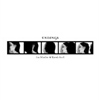 Continuing the label's tradition of beautifully packaged, limited edition releases, Endingsis the second text + music project from Crouton founder Jon Mueller. Anestablished and diverse drummer, playing with indie instrumentalistsPele, Collections of Colonies of Bees, and a myriad of improvensembles, Mueller's written works offer unique glimpses into thestrange reality of a clearly eccentric artist whose role is nevermerely complimentary. Endings combines eleven very shortstories (in a boxed, spineless book) with a 30-min. CD-R of readingmusic, and several black-and-white illustrations by Kaveh Soofi, theBay Area graphic artist who designed the cover for Pele's last album.Mueller's stories are by far the most exciting piece of the puzzle. Theauthor uses the concept of "endings" to create postcard lengthvignettes launching the reader into a darkly absurd and chaotic worldwhere narrative seems to strive immediately toward a propheticconclusion. The extreme shortness of the texts provides that nocharacter or scenario is developed outside of a series of scrupulous,often ridiculous details serving only the anticipation of some unifyingfinale. Mueller always delivers the goods, in the sense that he hurlseach clipped plotline into an unmistakable, impassable "end;" howeverhis endings are never the epiphanies his stories require. Instead theyoffer only the further mystification of an already lost cast ofcharacters, managing to transform a clever variety of hum-drum pursuitsand circumstances into windows to another hellish dimension. A man,inexplicably followed while on the way to the grocery store, eventuallyconfronts his enraged pursuer, severs his own finger, and proceeds toreverse the chase, threatening the other man with the bloody appendage.Another character puts on a play for his dinner guests starring apicture of his dead son, whom he directs: "Sing, boy! Sing!" A businessexecutive returns from an emergency call to find his interruptedinterviewee sipping from the potential employer's coffee cup, his eyesrising in blank defiance. Most impressive is Mueller's ability tostreamline each story with a detail-driven first-person narrative thatassumes normalcy and connectedness, only to completely break down bythe end. More than simple plot twists, the author's endings might becalled 'anti-epiphanies' in the way they are positioned, through astriking economy of language, to effectively dismantle the story'sprior logic. Mueller's musical accompaniment is unlike anything I'veheard from him yet and clearly serves the box's theme. A fadedsymphonic loop plays over and over to simulate a continuous,regenerating "ending," essentially a false ending that, in its 19-sec.length, reminds me of the obscured, darkened tones of a Badalamentiscore played out like one of William Basinski's Disintegration Loops,only without disintegrating. The atmosphere is soothing for a smallsecond, but ultimately turns to a sinister, anxious tension, both aptand almost nauseating when coupled with Mueller's words. Soofi'sillustrations are less fitting, but interesting nonetheless. From thelook of it they are digital images arranged comic-strip-style butwithout any explicit narrative. The images are almost all stylized,grey toned portraits, progressively clouded, shadowed, fragmented,cropped, and later barraged by clusters of nail-covered blocks. I cansee comparisons to Francis Bacon's portraiture, with the sectionedmurkiness and sketchy inaccuracies reminding me of animations by SouthAfrican artist William Kentridge, though Soofi's work has an unsettlinggeometric base that feels very unique. Endings is well worth itto anyone keen on interesting packaging and multimedia formats; I amstill involved in picking apart and connecting the contents of thisbeautiful release, no end in sight.
Continuing the label's tradition of beautifully packaged, limited edition releases, Endingsis the second text + music project from Crouton founder Jon Mueller. Anestablished and diverse drummer, playing with indie instrumentalistsPele, Collections of Colonies of Bees, and a myriad of improvensembles, Mueller's written works offer unique glimpses into thestrange reality of a clearly eccentric artist whose role is nevermerely complimentary. Endings combines eleven very shortstories (in a boxed, spineless book) with a 30-min. CD-R of readingmusic, and several black-and-white illustrations by Kaveh Soofi, theBay Area graphic artist who designed the cover for Pele's last album.Mueller's stories are by far the most exciting piece of the puzzle. Theauthor uses the concept of "endings" to create postcard lengthvignettes launching the reader into a darkly absurd and chaotic worldwhere narrative seems to strive immediately toward a propheticconclusion. The extreme shortness of the texts provides that nocharacter or scenario is developed outside of a series of scrupulous,often ridiculous details serving only the anticipation of some unifyingfinale. Mueller always delivers the goods, in the sense that he hurlseach clipped plotline into an unmistakable, impassable "end;" howeverhis endings are never the epiphanies his stories require. Instead theyoffer only the further mystification of an already lost cast ofcharacters, managing to transform a clever variety of hum-drum pursuitsand circumstances into windows to another hellish dimension. A man,inexplicably followed while on the way to the grocery store, eventuallyconfronts his enraged pursuer, severs his own finger, and proceeds toreverse the chase, threatening the other man with the bloody appendage.Another character puts on a play for his dinner guests starring apicture of his dead son, whom he directs: "Sing, boy! Sing!" A businessexecutive returns from an emergency call to find his interruptedinterviewee sipping from the potential employer's coffee cup, his eyesrising in blank defiance. Most impressive is Mueller's ability tostreamline each story with a detail-driven first-person narrative thatassumes normalcy and connectedness, only to completely break down bythe end. More than simple plot twists, the author's endings might becalled 'anti-epiphanies' in the way they are positioned, through astriking economy of language, to effectively dismantle the story'sprior logic. Mueller's musical accompaniment is unlike anything I'veheard from him yet and clearly serves the box's theme. A fadedsymphonic loop plays over and over to simulate a continuous,regenerating "ending," essentially a false ending that, in its 19-sec.length, reminds me of the obscured, darkened tones of a Badalamentiscore played out like one of William Basinski's Disintegration Loops,only without disintegrating. The atmosphere is soothing for a smallsecond, but ultimately turns to a sinister, anxious tension, both aptand almost nauseating when coupled with Mueller's words. Soofi'sillustrations are less fitting, but interesting nonetheless. From thelook of it they are digital images arranged comic-strip-style butwithout any explicit narrative. The images are almost all stylized,grey toned portraits, progressively clouded, shadowed, fragmented,cropped, and later barraged by clusters of nail-covered blocks. I cansee comparisons to Francis Bacon's portraiture, with the sectionedmurkiness and sketchy inaccuracies reminding me of animations by SouthAfrican artist William Kentridge, though Soofi's work has an unsettlinggeometric base that feels very unique. Endings is well worth itto anyone keen on interesting packaging and multimedia formats; I amstill involved in picking apart and connecting the contents of thisbeautiful release, no end in sight.
samples:
Polyvinyl Just like their previous album, Face.(a,this year's release from Collections of Colonies of Bees manages tosqueak in very quietly just underneath the radar, without a lot of hypeor fanfare, to surprisingly become one of my top albums of the year.The formula holds close to the last album: taking an instrumental rock"band" setup and mutating it through inhuman editing. It's a setupwhich has gained popularity in the last couple years with groups likeRadian, Nudge, Trapist, and Supersilent, but Collections of Colonies ofBees have become masters at the art. Pele have decided to call itquits, however, the Collections lineup is now almost identical to Pele,with Jon Mueller and Chris Rosenau bringing other Pele alumni Jon Minoron board this time along with Jim Schoenecker. (Perhaps they weregetting tired of being in TOO many bands—see above review!) Bright andspringy guitar melodies live harmoniously with manipulated twitters,beats and whirrs, while miscellaneous unidentifiable objects providerhythm colorization in spots. Fans of both the upbeat Pele andMuller/Rosenau's improvisational experimental outings find a mediumhere, as the line is delicately walked between pop melodies and nerdyimprovisation. Some songs, (nine out of ten are named "fun") are mostdecidedly organically driven, while some are clearly more electronic.The story of the recordings is that the band took a number of differentapproaches to each composition, and the Japanese version of Customer,on Some of Us, uses the more electronic versions of the more organicsongs here and more organic versions of the more electronic songscontained here. If that's not confusing enough, a vinyl edition of therecord contains only the "electronic" songs from both. While a disclike this might be good for an afternoon read at home, I highlyrecommend playing at loud volumes to fully enjoy some of the fantasticlow frequency bass sounds and alien ticks which dance around the ears.Like a fantastic sushi dinner, at the end I'm eager for more, andunfortunately that means getting a hold of Customer's Japanese counterpart.
Just like their previous album, Face.(a,this year's release from Collections of Colonies of Bees manages tosqueak in very quietly just underneath the radar, without a lot of hypeor fanfare, to surprisingly become one of my top albums of the year.The formula holds close to the last album: taking an instrumental rock"band" setup and mutating it through inhuman editing. It's a setupwhich has gained popularity in the last couple years with groups likeRadian, Nudge, Trapist, and Supersilent, but Collections of Colonies ofBees have become masters at the art. Pele have decided to call itquits, however, the Collections lineup is now almost identical to Pele,with Jon Mueller and Chris Rosenau bringing other Pele alumni Jon Minoron board this time along with Jim Schoenecker. (Perhaps they weregetting tired of being in TOO many bands—see above review!) Bright andspringy guitar melodies live harmoniously with manipulated twitters,beats and whirrs, while miscellaneous unidentifiable objects providerhythm colorization in spots. Fans of both the upbeat Pele andMuller/Rosenau's improvisational experimental outings find a mediumhere, as the line is delicately walked between pop melodies and nerdyimprovisation. Some songs, (nine out of ten are named "fun") are mostdecidedly organically driven, while some are clearly more electronic.The story of the recordings is that the band took a number of differentapproaches to each composition, and the Japanese version of Customer,on Some of Us, uses the more electronic versions of the more organicsongs here and more organic versions of the more electronic songscontained here. If that's not confusing enough, a vinyl edition of therecord contains only the "electronic" songs from both. While a disclike this might be good for an afternoon read at home, I highlyrecommend playing at loud volumes to fully enjoy some of the fantasticlow frequency bass sounds and alien ticks which dance around the ears.Like a fantastic sushi dinner, at the end I'm eager for more, andunfortunately that means getting a hold of Customer's Japanese counterpart.
samples:
 While the days of guitar maximalism are long in Cranes' past, Particles & Waves showcases a band who is doing a very good job when they attempt to recapture the stunningly haunting sound that drew so many fans a decade ago. On songs like "K56," and "Here Comes the Snow," Alison Shaw's piercingly high pitched voice is fragile and lonely, almost naked against the patient and pretty melodies. However, there are certain points where I simply cannot connect with the music.
While the days of guitar maximalism are long in Cranes' past, Particles & Waves showcases a band who is doing a very good job when they attempt to recapture the stunningly haunting sound that drew so many fans a decade ago. On songs like "K56," and "Here Comes the Snow," Alison Shaw's piercingly high pitched voice is fragile and lonely, almost naked against the patient and pretty melodies. However, there are certain points where I simply cannot connect with the music.
Everest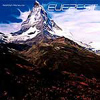 Having one or two good songs sandwiched between pointless exercises inmelodic looping is quite frustrating. Even worse is when a minute totwo minutes of a song are utterly captivating while the rest of itsimply seems like an effort to move up a very steep hill. Locatedsomewhere in the middle of this messy album is a vacuum of badproduction that consumes all of the stumbling rhythms and accentuatesthe rather flat and circular melodies. I'm never quite sure which I'msupposed to be listening to more and a complete lack of dynamics in thesong-writing only makes the banality of Heimlich Maneuverall the more blinding. For example, near the end of the album"Faulhorn" begins to resonate above and beyond the routine that hasbeen the entirety of the album; but as the song progresses, it becomesobvious that what I'm dealing with is actually a sonic cock-tease. As abass line and regiment of percussive sounds march into the piece,everything begins to blend together into a murky soup. Repeat andrecycle and a large portion of the album is enumerated and elucidatedas much as is possible within the realms of boredom. "Ro3" and "Dex"both flaunt a predisposition towards excellence and, to some extent,"Dex" actually succeeds. Maybe the track's short running time has alittle bit to do with its success or maybe it's because Everest don'tbother with adding layers of unnecessary instrumentation andornamentation. Everest work best on a simple and direct basis: anyexuberance or decoration kills the mood they can develop with solittle. "Falke," when it begins, rolls like a gorgeous thunder andcontinues to do so without being stuffed full of spiffy effects orabrupt changes in thematic direction. Even if the band could escapetheir inability to keep everything within a creatively controllablespace, they'd have to deal with the monotonous tone of the album as awhole. Many of their warm and welcoming synth tones feel rehashed bythe time "Channel Sky" cuts out. There's something lovable about thisrecord, but it's ultimately just another example of how to loop beatsand melodies ad nauseam. To be fair, there are a few tracks thatcould've made up the contents of a beautiful little EP, but within theconfines of the rest of the album they suffer considerably.
Having one or two good songs sandwiched between pointless exercises inmelodic looping is quite frustrating. Even worse is when a minute totwo minutes of a song are utterly captivating while the rest of itsimply seems like an effort to move up a very steep hill. Locatedsomewhere in the middle of this messy album is a vacuum of badproduction that consumes all of the stumbling rhythms and accentuatesthe rather flat and circular melodies. I'm never quite sure which I'msupposed to be listening to more and a complete lack of dynamics in thesong-writing only makes the banality of Heimlich Maneuverall the more blinding. For example, near the end of the album"Faulhorn" begins to resonate above and beyond the routine that hasbeen the entirety of the album; but as the song progresses, it becomesobvious that what I'm dealing with is actually a sonic cock-tease. As abass line and regiment of percussive sounds march into the piece,everything begins to blend together into a murky soup. Repeat andrecycle and a large portion of the album is enumerated and elucidatedas much as is possible within the realms of boredom. "Ro3" and "Dex"both flaunt a predisposition towards excellence and, to some extent,"Dex" actually succeeds. Maybe the track's short running time has alittle bit to do with its success or maybe it's because Everest don'tbother with adding layers of unnecessary instrumentation andornamentation. Everest work best on a simple and direct basis: anyexuberance or decoration kills the mood they can develop with solittle. "Falke," when it begins, rolls like a gorgeous thunder andcontinues to do so without being stuffed full of spiffy effects orabrupt changes in thematic direction. Even if the band could escapetheir inability to keep everything within a creatively controllablespace, they'd have to deal with the monotonous tone of the album as awhole. Many of their warm and welcoming synth tones feel rehashed bythe time "Channel Sky" cuts out. There's something lovable about thisrecord, but it's ultimately just another example of how to loop beatsand melodies ad nauseam. To be fair, there are a few tracks thatcould've made up the contents of a beautiful little EP, but within theconfines of the rest of the album they suffer considerably.
samples:
Strange Attractors Audio House
samples:
 Off/On is a small but important step forward for Forma. Compared to the eponymous release from last year, it is similar in its sonic trappings, but for a group whose whole identity is fixed around nostalgia for kosmische synth loops and drum machine motorik beats, this record demonstrates how they can grow beyond their influences. The signature sound of the group is fleshed out in greater layers, with better production, and teems with hopeful optimism on its standout songs, hinting at an ambitious streak about to surface.
Off/On is a small but important step forward for Forma. Compared to the eponymous release from last year, it is similar in its sonic trappings, but for a group whose whole identity is fixed around nostalgia for kosmische synth loops and drum machine motorik beats, this record demonstrates how they can grow beyond their influences. The signature sound of the group is fleshed out in greater layers, with better production, and teems with hopeful optimism on its standout songs, hinting at an ambitious streak about to surface.
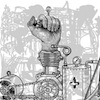 Despite his seeming obsession with angels (just look at the list of titles of Earth’s albums and songs), Dylan Carlson’s current obsession with fairies and the occult history of England came as a bit of a surprise. Images of him playing fey faux folk music in tights came to mind but I decided to give him the benefit of the doubt. I am glad I did as his drcarlsonalbion project is turning out to be just as intriguing as his work with Earth.
Despite his seeming obsession with angels (just look at the list of titles of Earth’s albums and songs), Dylan Carlson’s current obsession with fairies and the occult history of England came as a bit of a surprise. Images of him playing fey faux folk music in tights came to mind but I decided to give him the benefit of the doubt. I am glad I did as his drcarlsonalbion project is turning out to be just as intriguing as his work with Earth.
 A combination of esoteric neofolk and electronic experimentation, Circulation of Light (Nathaniel Ritter of Kinit Her and Burial Hex, among others) sits nicely between those two genres. While I tend to find artists who overly favor one end of those two poles monotonous over time, Acheiropoeita does not have that problem in the slightest.
A combination of esoteric neofolk and electronic experimentation, Circulation of Light (Nathaniel Ritter of Kinit Her and Burial Hex, among others) sits nicely between those two genres. While I tend to find artists who overly favor one end of those two poles monotonous over time, Acheiropoeita does not have that problem in the slightest.
 This is the eponymous debut album from Andrea Belfi (percussion), BJ Nilsen (electronics), and Simon James Phillips (piano). Recorded live in a Berlin church. the album comes across as an isolating, but effective combination of these three different artists, coming together to produce something that sounds like none of them in particular, but a whole that has its own singular sound.
This is the eponymous debut album from Andrea Belfi (percussion), BJ Nilsen (electronics), and Simon James Phillips (piano). Recorded live in a Berlin church. the album comes across as an isolating, but effective combination of these three different artists, coming together to produce something that sounds like none of them in particular, but a whole that has its own singular sound.
 Atrocities, dictators and bodily functions, these are a few of Scott Walker’s favorite things. Throughout the dense lyrical jungle of Bish Bosch are examples of all these subjects amid dozens of other topics, all processed through Walker’s intense imagination. At times bewildering, amusing and disturbing, this is a magnificent album that continues from the same point where The Drift left off.
Atrocities, dictators and bodily functions, these are a few of Scott Walker’s favorite things. Throughout the dense lyrical jungle of Bish Bosch are examples of all these subjects amid dozens of other topics, all processed through Walker’s intense imagination. At times bewildering, amusing and disturbing, this is a magnificent album that continues from the same point where The Drift left off.
 After a tantalizing two-year trickle of 12" singles and an EP, this unrelentingly bleak UK post-industrial duo have finally released a full album.  It was an event that I awaited with a mixture of anticipation and dread, however, as Raime had announced earlier that they had moved towards employing mostly live instrumentation, a decision that has historically not gone well for most electronic artists.  It certainly went well here though, as this is easily Raime's finest effort to date and a truly impressive evolution besides.
After a tantalizing two-year trickle of 12" singles and an EP, this unrelentingly bleak UK post-industrial duo have finally released a full album.  It was an event that I awaited with a mixture of anticipation and dread, however, as Raime had announced earlier that they had moved towards employing mostly live instrumentation, a decision that has historically not gone well for most electronic artists.  It certainly went well here though, as this is easily Raime's finest effort to date and a truly impressive evolution besides.
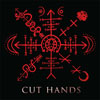 A surprisingly fast follow-up to the Afro Noise I album, Black Mamba already demonstrates an even further evolution of William Bennett's post-Whitehouse career, one that sees his work being utilized in documentaries about drugs and Snoop Lion (formerly Dogg).  While there was an overt intensity to the first album, via the rapid, claustrophobic drumming and dense atmospheres, here things are a bit more understated and pensive, but no less fascinating.
A surprisingly fast follow-up to the Afro Noise I album, Black Mamba already demonstrates an even further evolution of William Bennett's post-Whitehouse career, one that sees his work being utilized in documentaries about drugs and Snoop Lion (formerly Dogg).  While there was an overt intensity to the first album, via the rapid, claustrophobic drumming and dense atmospheres, here things are a bit more understated and pensive, but no less fascinating.
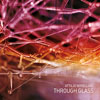 Novellino may be a relatively young artist in the world of minimalist sound, but these two distinct, but complimentary demonstrate that he is definitely not lacking experience or ability. In both a long-form single piece and a series of shorter compositions, he balances both the static and the dynamic to excellent effect.
Novellino may be a relatively young artist in the world of minimalist sound, but these two distinct, but complimentary demonstrate that he is definitely not lacking experience or ability. In both a long-form single piece and a series of shorter compositions, he balances both the static and the dynamic to excellent effect.
 Moving from minimalism to free jazz for inspiration, this new album by Eleh is inspired by the later period of John Coltrane’s career. Although elements of these two pieces have been utilized during recent performances, these studio versions are described as "magnifications" of those live sketches. Far from being jazz, this is not the notes Eleh is not playing but the synthesis of new notes and frequencies from the standing waves and intervals emanating from the grooves on the record.
Moving from minimalism to free jazz for inspiration, this new album by Eleh is inspired by the later period of John Coltrane’s career. Although elements of these two pieces have been utilized during recent performances, these studio versions are described as "magnifications" of those live sketches. Far from being jazz, this is not the notes Eleh is not playing but the synthesis of new notes and frequencies from the standing waves and intervals emanating from the grooves on the record.
 Steve Hauschildt steps out on Sequitur to make a case for himself as a talented producer of meticulously sequenced pop music. Like Emeralds' latest effort Just To Feel Anything, this record is a logical next step for Steve; rooted in new wave, techno, and a blend of genre exercise and timeless cohesion, and while it's common for ambient or electronic groups to evolve towards making pop-oriented albums, it's still a pleasant course that unfolds when handled with skill and subtlety.
Steve Hauschildt steps out on Sequitur to make a case for himself as a talented producer of meticulously sequenced pop music. Like Emeralds' latest effort Just To Feel Anything, this record is a logical next step for Steve; rooted in new wave, techno, and a blend of genre exercise and timeless cohesion, and while it's common for ambient or electronic groups to evolve towards making pop-oriented albums, it's still a pleasant course that unfolds when handled with skill and subtlety.
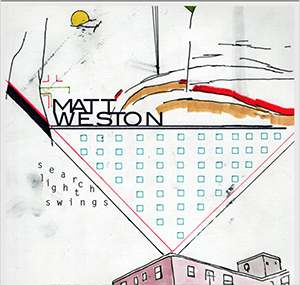 Matt Weston’s last release, the Organum-esque scrape and drone fest "Kidnapping Denials/Put on a Good Face" did an exemplary job at capturing him in his natural habitat as a percussionist, albeit a rather unconventional one. While that was based upon live recordings, his newest 7" is a bit more multi-instrumentalist and studio-centric in its approach. Made up of two rather brief pieces, it is a tantalizingly short yet fully engaging single.
Matt Weston’s last release, the Organum-esque scrape and drone fest "Kidnapping Denials/Put on a Good Face" did an exemplary job at capturing him in his natural habitat as a percussionist, albeit a rather unconventional one. While that was based upon live recordings, his newest 7" is a bit more multi-instrumentalist and studio-centric in its approach. Made up of two rather brief pieces, it is a tantalizingly short yet fully engaging single.
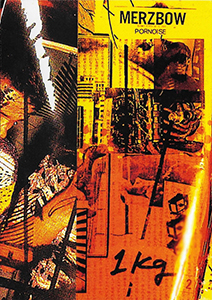 Pornoise 1 KG is somewhat of a landmark release in Masami Akita’s sprawling, ever expanding and complex discography. Recorded in 1984 and issued multiple times as a five-cassette set not long after, it represents one of the first long form collections of Merzbow to have been released. Reissued here on six CDs (including the separately released Pornoise Extra as disc six), it makes for an excellent snapshot of what Akita first started out doing, and hints at what would come later in his long career.
Pornoise 1 KG is somewhat of a landmark release in Masami Akita’s sprawling, ever expanding and complex discography. Recorded in 1984 and issued multiple times as a five-cassette set not long after, it represents one of the first long form collections of Merzbow to have been released. Reissued here on six CDs (including the separately released Pornoise Extra as disc six), it makes for an excellent snapshot of what Akita first started out doing, and hints at what would come later in his long career.
 I have long been a great admirer of Tom Ellard's prickly, erratic, and singular genius, but I completely slept on this deluxe reissue from Medical Records for much of the year, as I did not recall 1985's Stretcher EP as being particularly crucial or something that I would ever need to own on vinyl.  In that regard, I was mostly correct, but I was unaware that Stretcher had surfaced in so many different variations or that consolidating them all would yield an excellent double album.  Therein lays the genius of this reissue, as such an absolute avalanche of classic material from this era packs a lot of cumulative power.  In fact, this is probably the best single documentation of Severed Heads' golden age available: the brief window in the mid-'80s where Ellard’s deranged and perverse experimentalism started to take shape into eccentric and hook-filled pop structures.
I have long been a great admirer of Tom Ellard's prickly, erratic, and singular genius, but I completely slept on this deluxe reissue from Medical Records for much of the year, as I did not recall 1985's Stretcher EP as being particularly crucial or something that I would ever need to own on vinyl.  In that regard, I was mostly correct, but I was unaware that Stretcher had surfaced in so many different variations or that consolidating them all would yield an excellent double album.  Therein lays the genius of this reissue, as such an absolute avalanche of classic material from this era packs a lot of cumulative power.  In fact, this is probably the best single documentation of Severed Heads' golden age available: the brief window in the mid-'80s where Ellard’s deranged and perverse experimentalism started to take shape into eccentric and hook-filled pop structures.
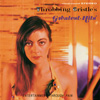 As much as I love Throbbing Gristle, I've long viewed them as a Marcel Duchamp-like entity: bold, brilliant, and hugely influential, but dramatically less potent outside of their original context and in the wake of everyone who later built upon their vision. After a deep re-immersion in their work, however, I can honestly say that several pieces still sound remarkably vital even today and that this album remains a condensed and inspiring blueprint for being awesome (albeit an imperfect one).
As much as I love Throbbing Gristle, I've long viewed them as a Marcel Duchamp-like entity: bold, brilliant, and hugely influential, but dramatically less potent outside of their original context and in the wake of everyone who later built upon their vision. After a deep re-immersion in their work, however, I can honestly say that several pieces still sound remarkably vital even today and that this album remains a condensed and inspiring blueprint for being awesome (albeit an imperfect one).



